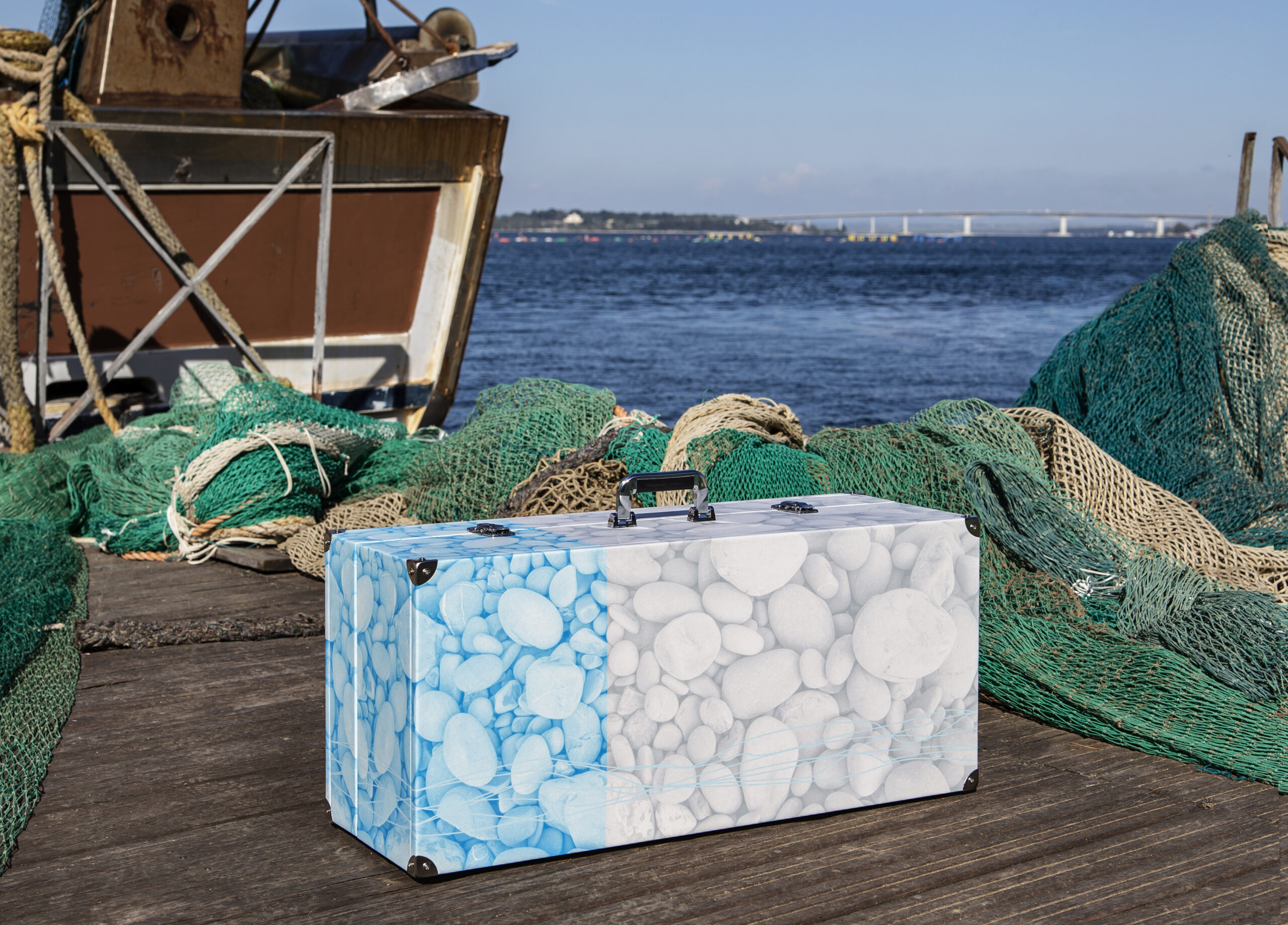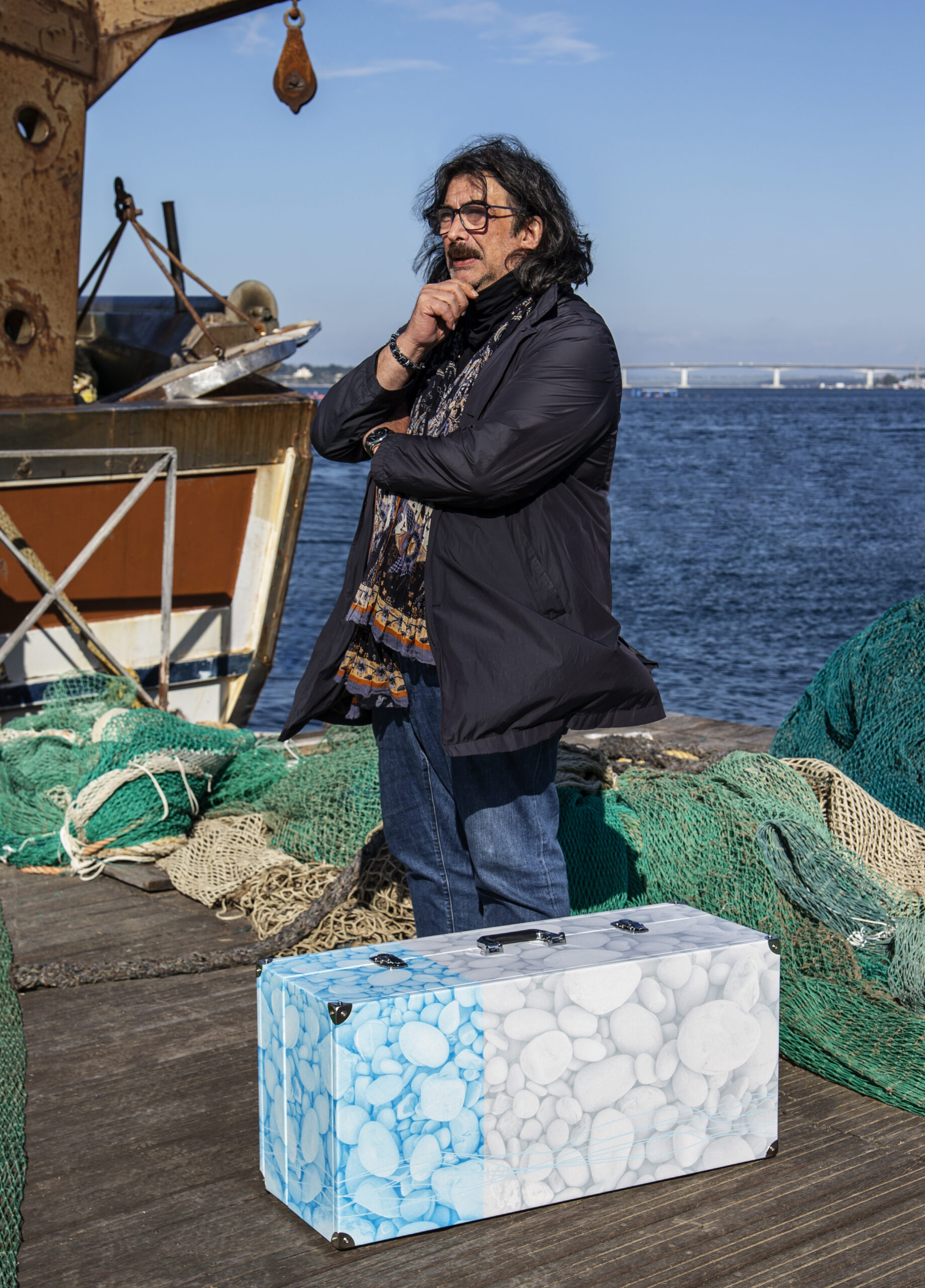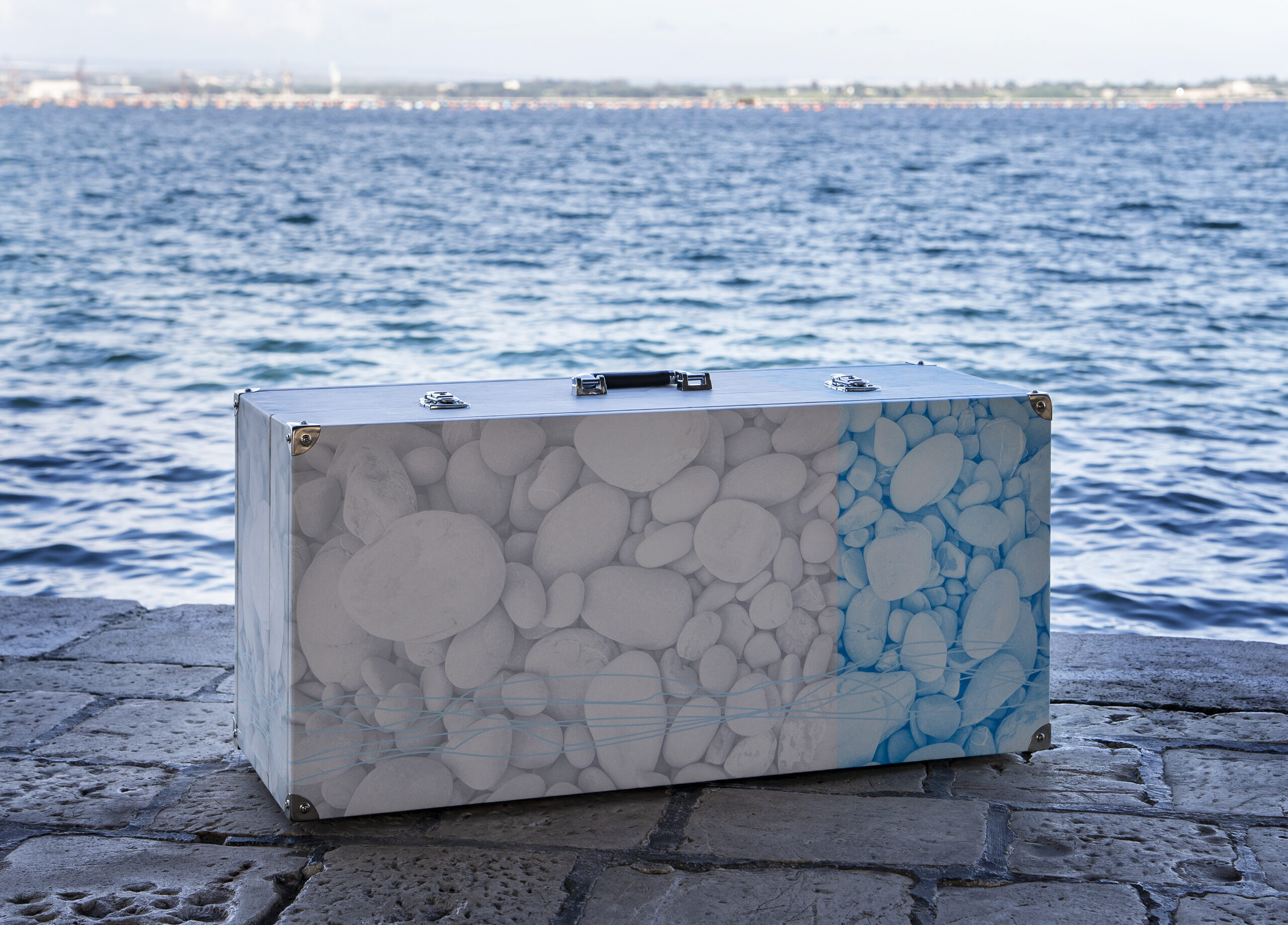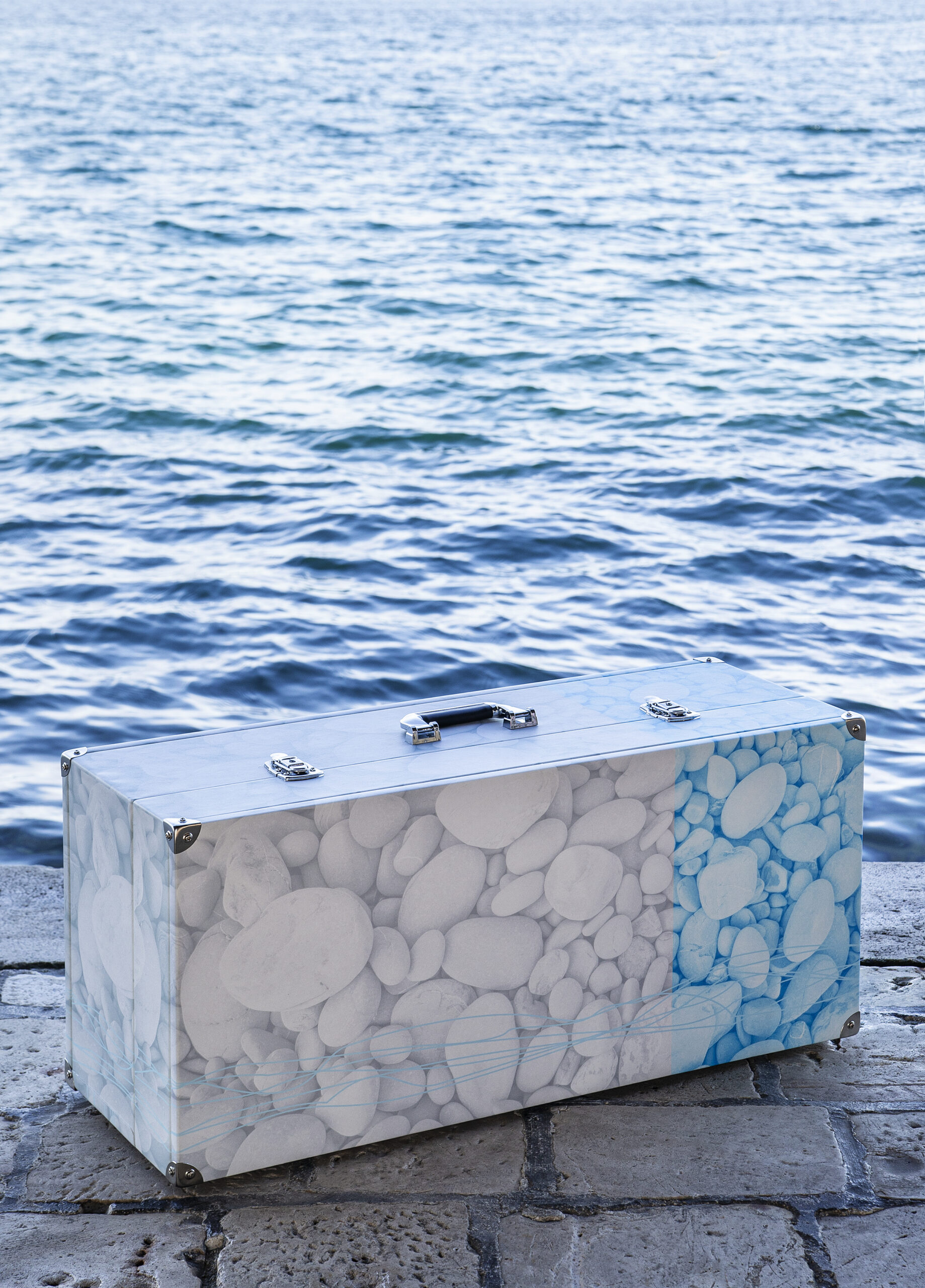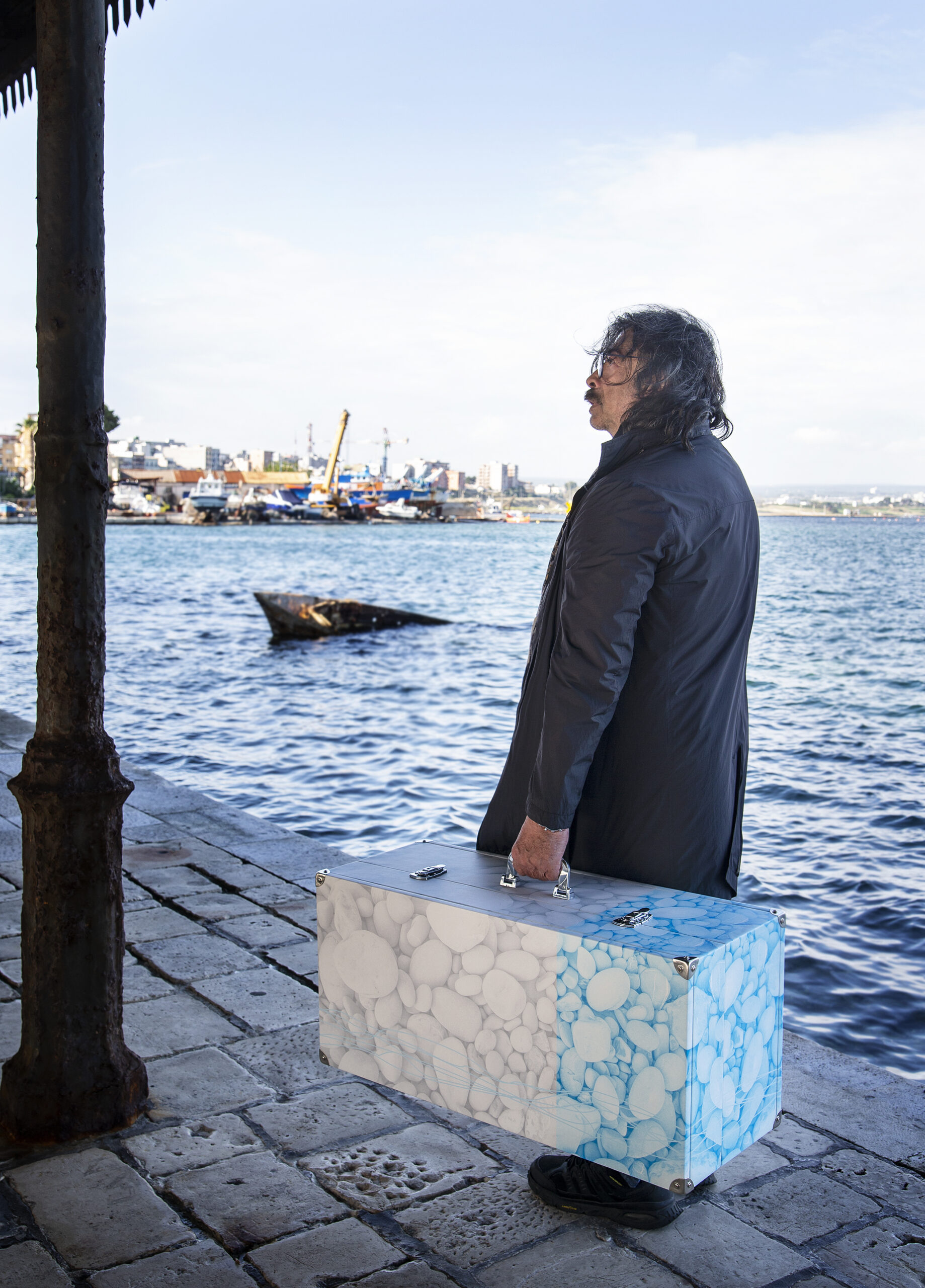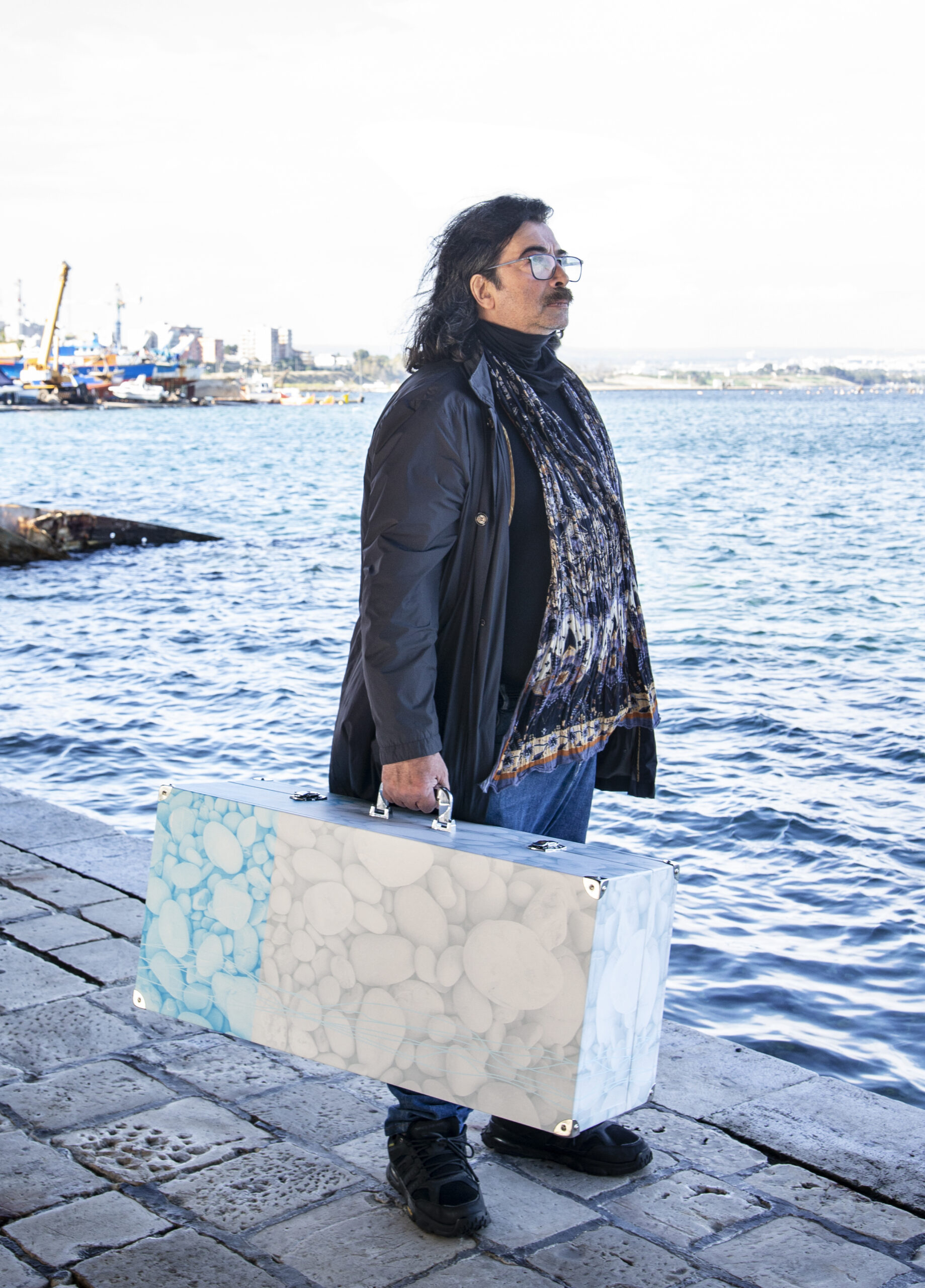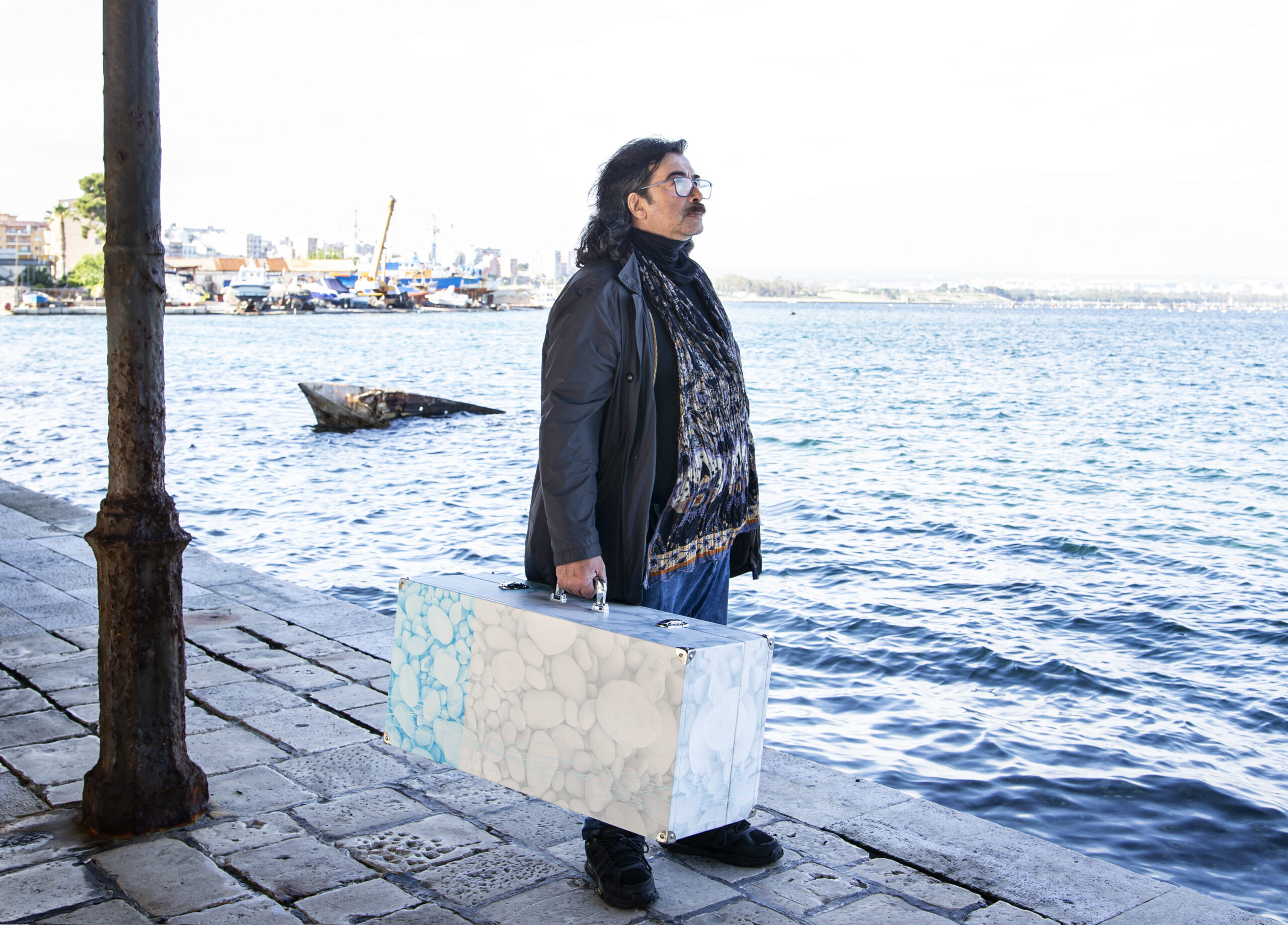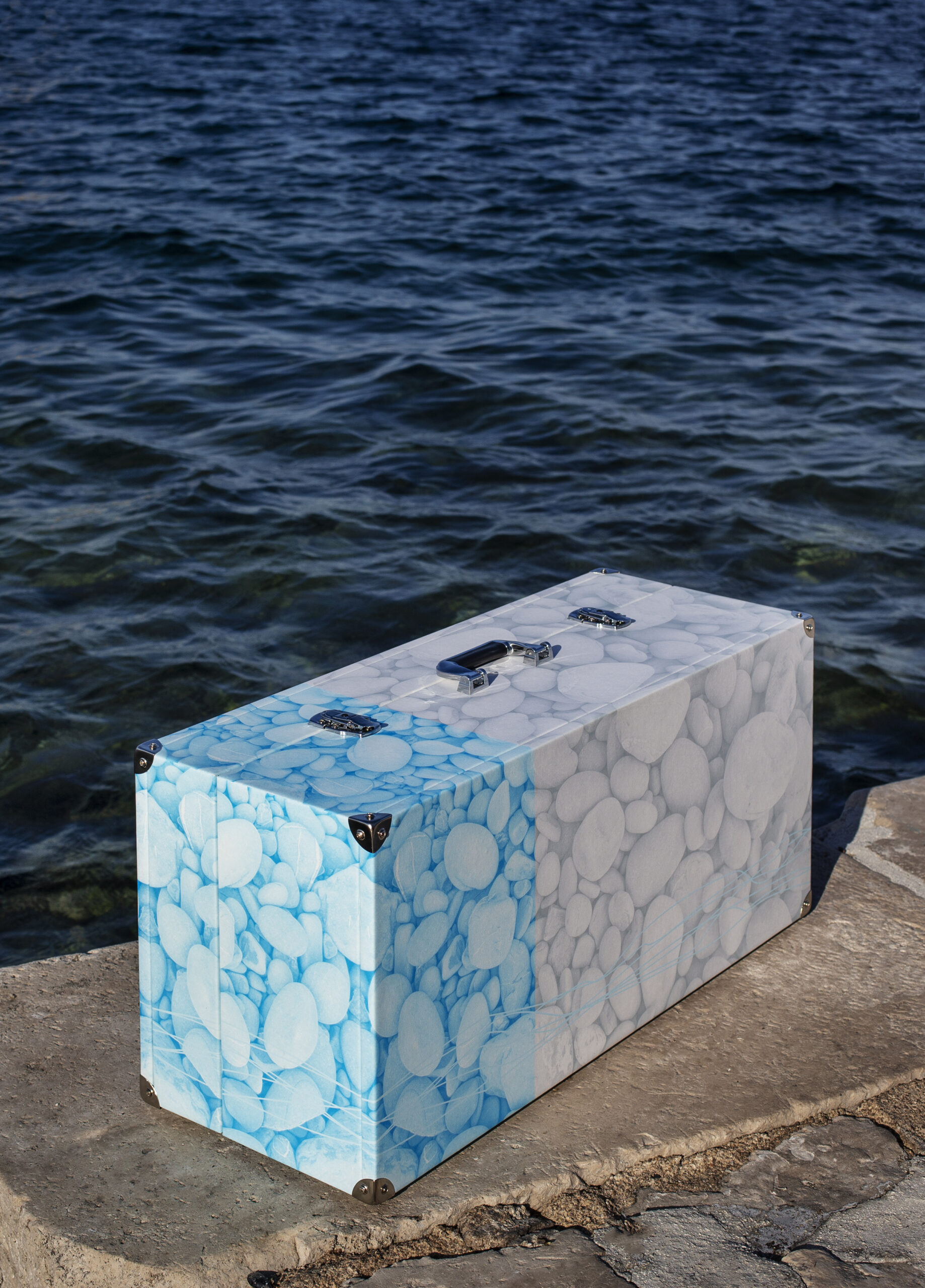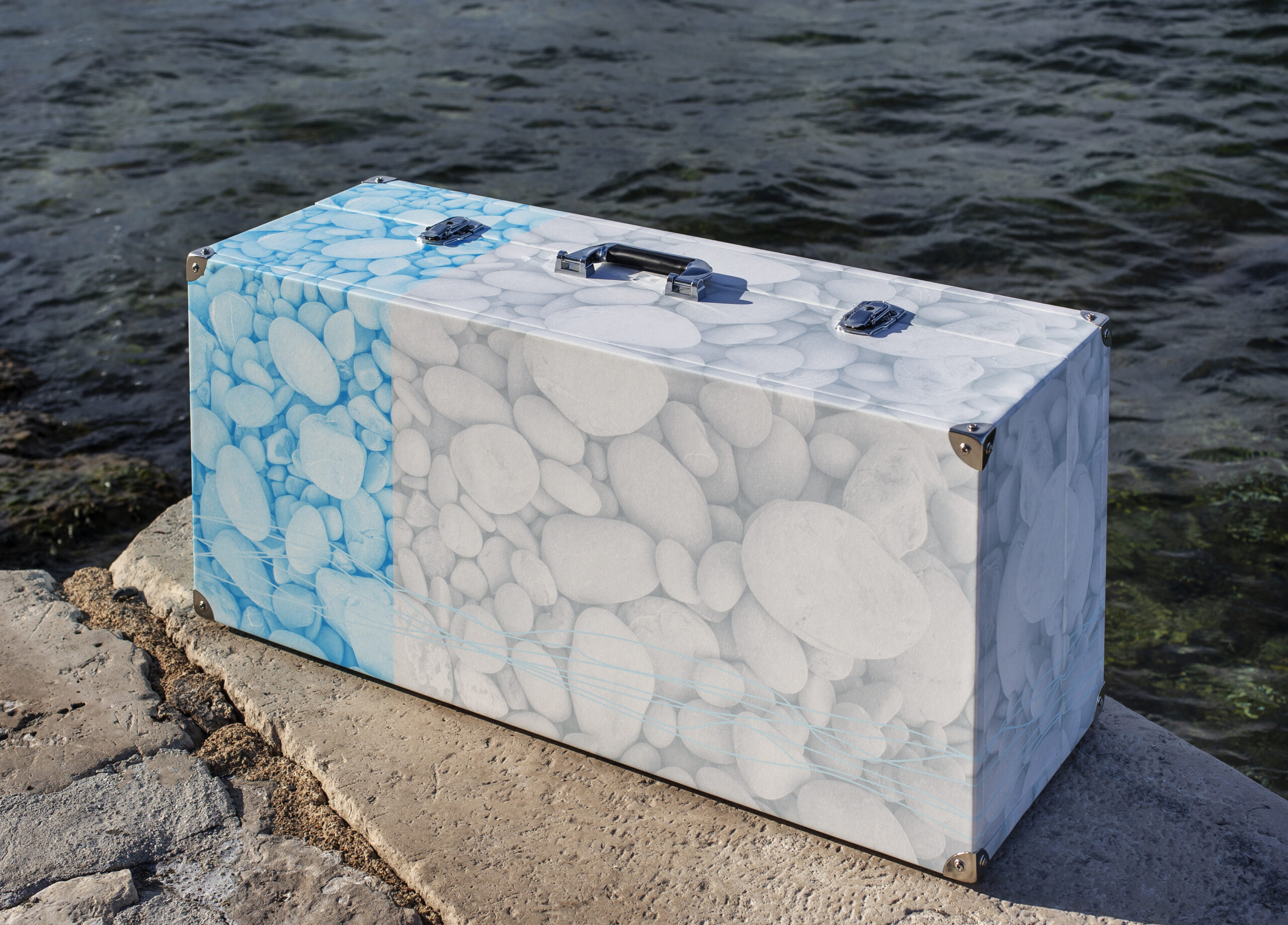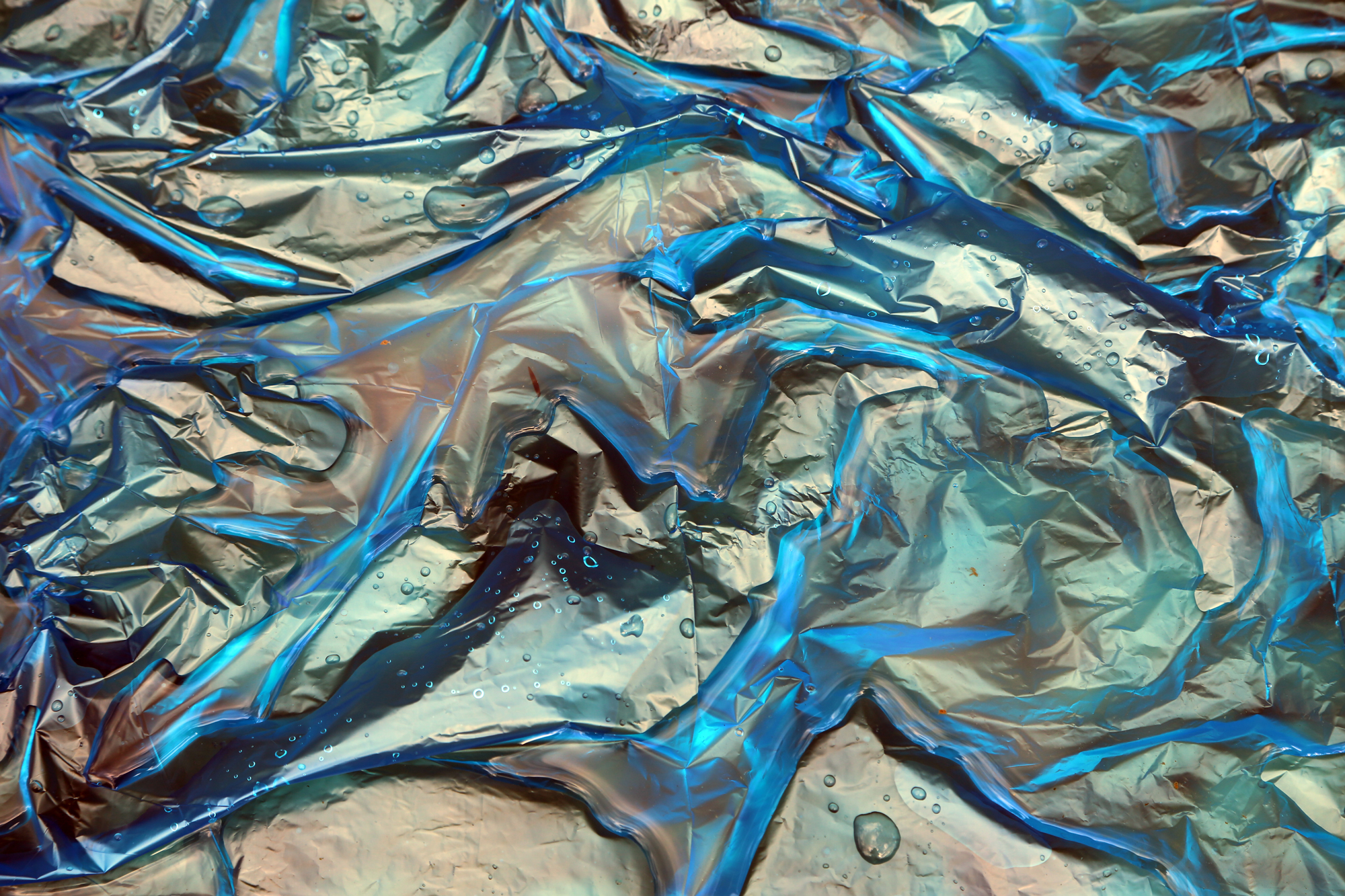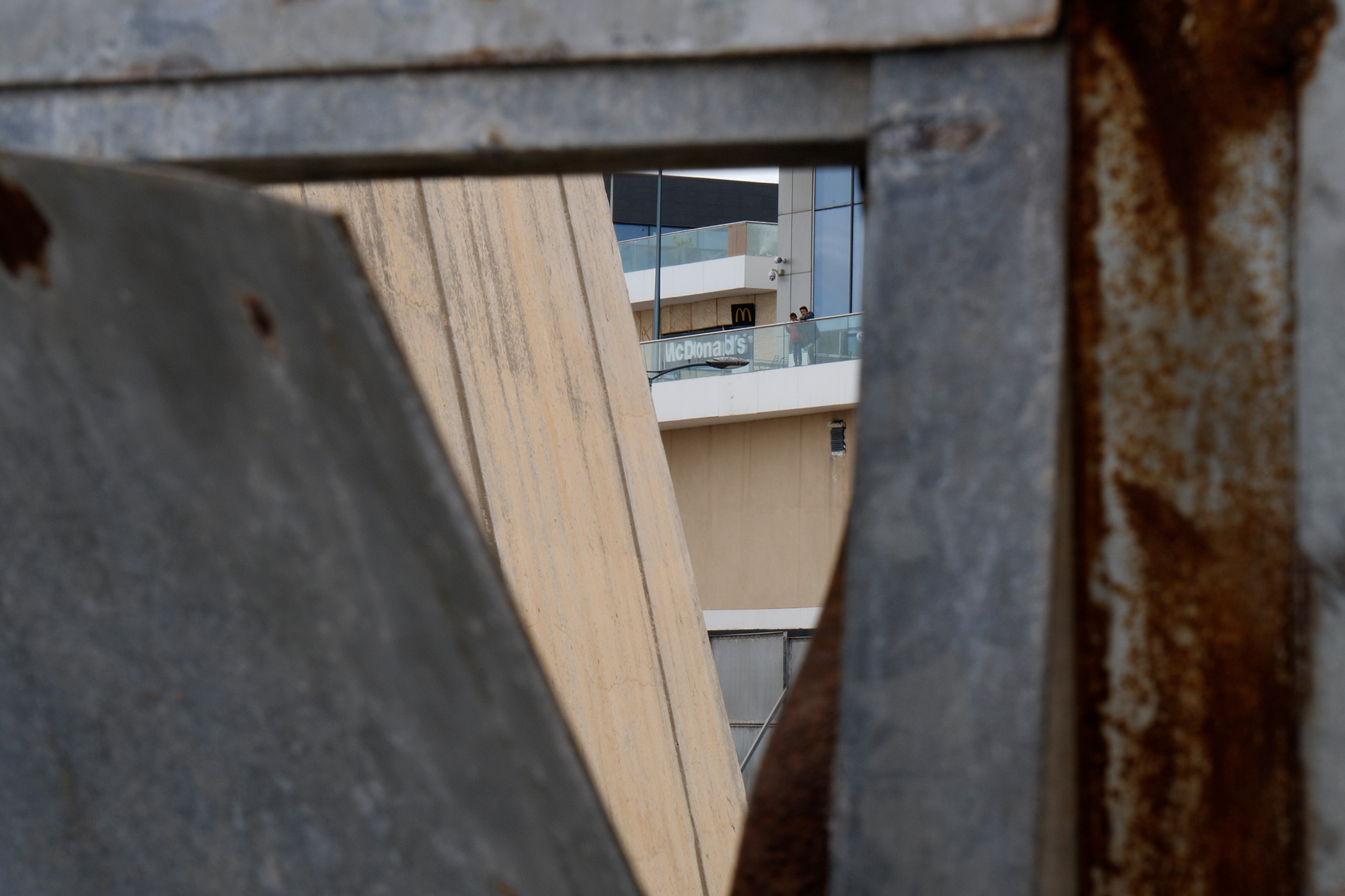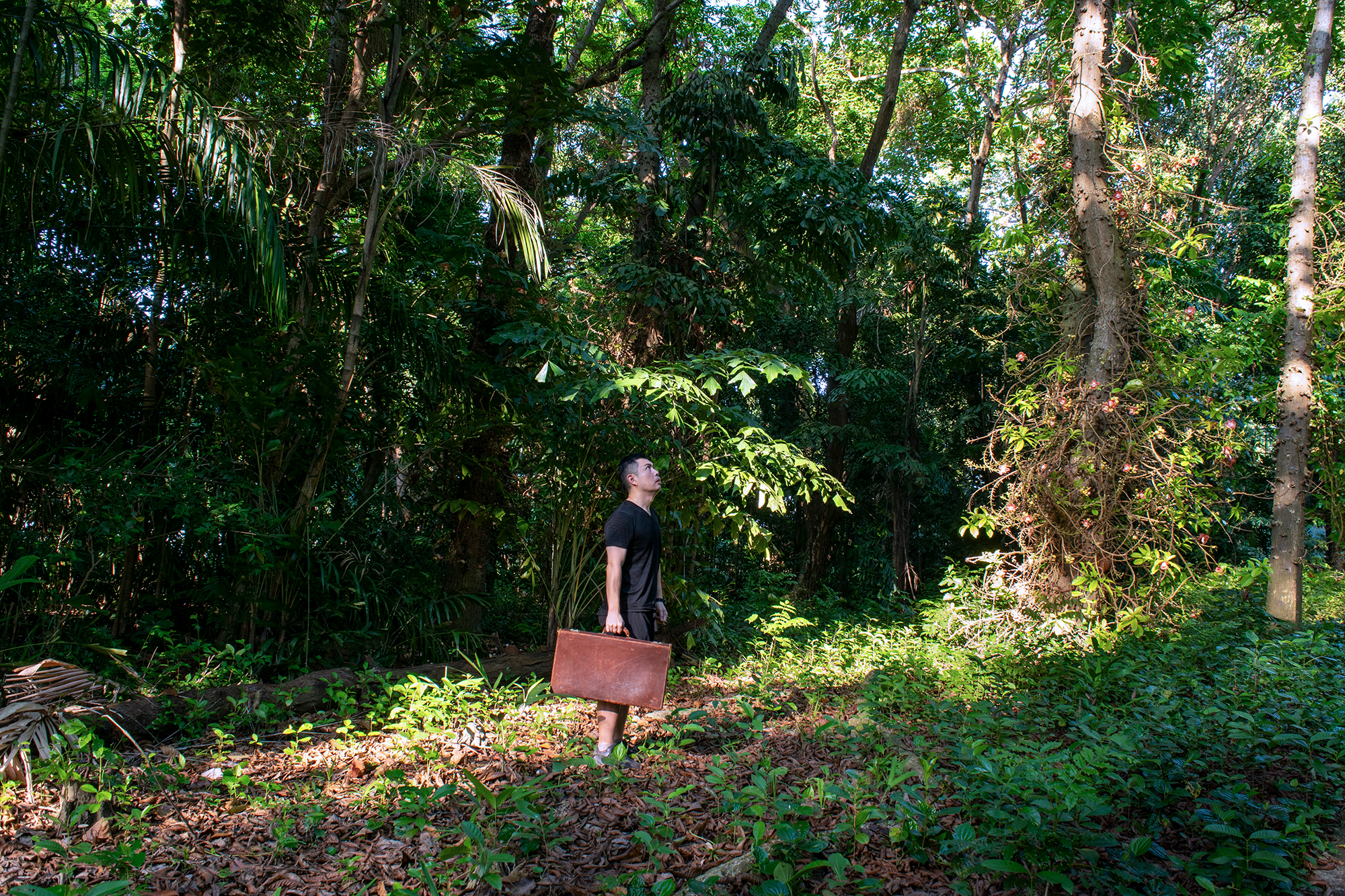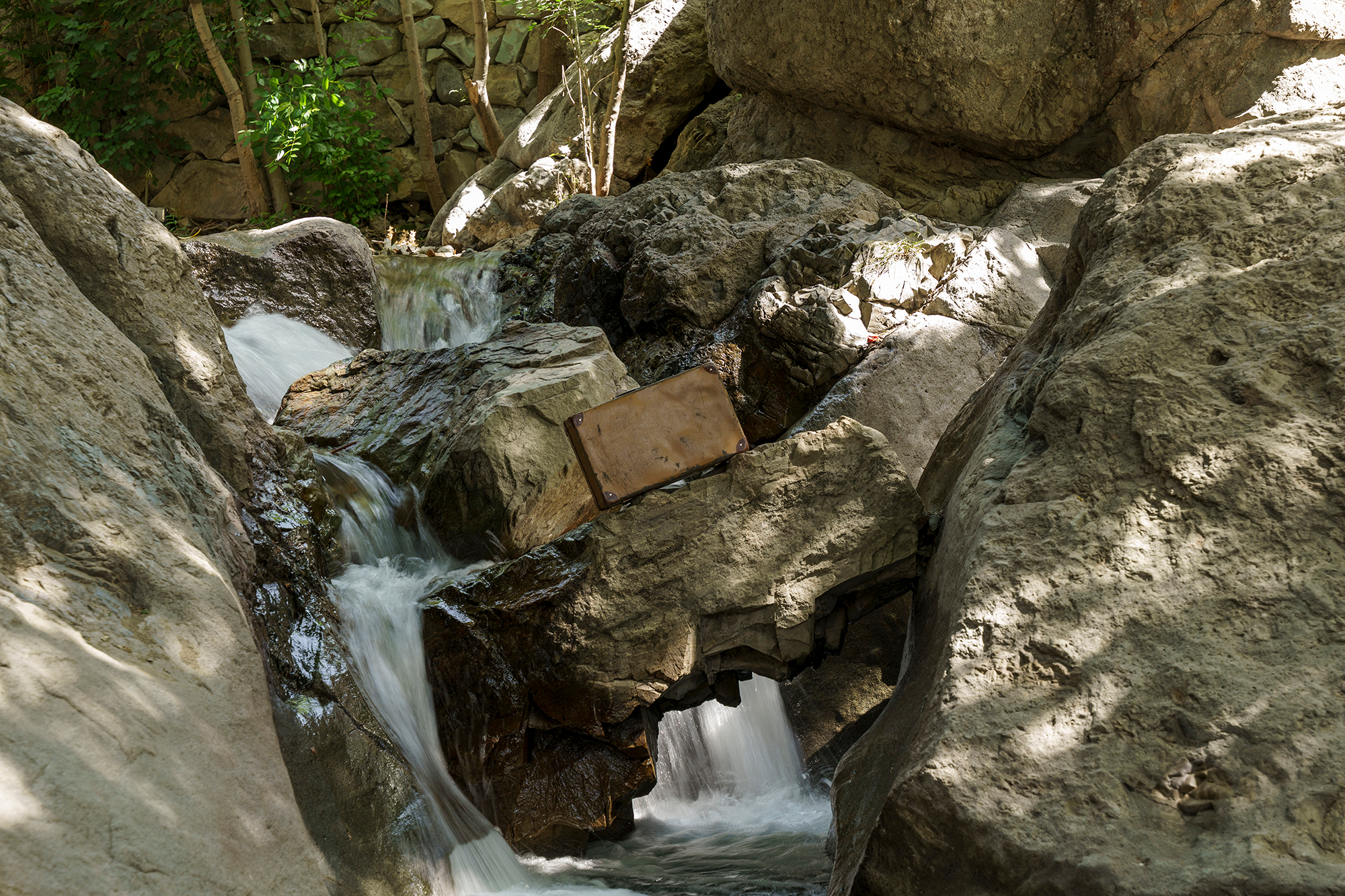— 5 Min Read —
Giulio De Mitri, Artist in Residence 2023
— 5 Min Read —
Giulio De Mitri, Artist in Residence 2023
“Who that has ever visited the borders of this classic sea, has not felt at the first sight of its waters a glow of reverent rapture akin to devotion, and an instinctive sensation of thanksgiving at being permitted to stand before these hallowed waves?”
Edward Forbes
The Museum of Contemporary Cuts (MoCC) in 2023 — as part of “Students as Researchers: Creative Practice and University Education,” a Collateral Event organized by the New York Institute of Technology, School of Architecture and Design, approved by Leslie Lokko, curator of the Venice Architecture Biennale 2023 — is hosting Giulio De Mitri as artist in residence from January to December 2023. The artist is one of a group of 12 international artists presenting a mobile exploration of the crisis of water. The curatorial project conceived by Lanfranco Aceti will be a long-term investigation into the elemental crisis of water, earth, wind, and fire. The artists will explore, according to their own personal aesthetic approaches and cultural underpinnings, the elemental crisis of water, its impact, and the consequences of the alterations of its mythologies and poetics. The curatorial brief, titled What If This Were The Case? – The Waters We Are In, is inspired by the meaning of ‘case’: building up a legal case as well as a case being a piece of luggage. The international sharing of knowledge, understanding, and interpretations of the current crises are paramount to resuscitate old mythologies and cultural postulates — or to develop new ones — truly inspired by communal structures of surviving, living, and possibly even thriving.
Artist’s Bio
Over forty years of active presence in the visual arts characterize the artistic research of Giulio De Mitri. He gives his work an ever-new value, full of stimuli and meanings: a cosmogonic repertoire drenched in mythical and sacred visions. He is a rigorous artist and a refined intellectual with multiple cultural interests. Over the course of his long and challenging artistic journey, De Mitri’s works have been rooted in deep ethical and aesthetic reflections. They stand upon a philosophical matrix based on Platonic and Heraclitean philosophical thought linked to the social and linguistic issues of the twentieth and twenty-first centuries. With his works of art — the expression of an artist among the most significant of his generation — he evokes great existential themes.
De Mitri sees the Mediterranean as the extraordinary universe that links the threads of human history, the cradle of civilization and culture, from West to East, North to South, and vice versa — a miracle that welcomes and distributes creativity and beauty. “The Mediterranean, a magical territory, open to all diversity,” says De Mitri “is an Eden where passion and reason, nature and history, meet and lose their boundaries and merge into a body and soul; a perfect osmosis capable of generating and determining new cultural and aesthetic life. A new and fruitful vision Meridiana, for a culture of dialogue, for a plural richness.”
Committed to the history and imagination of Mediterranean culture, De Mitri is present in prestigious national and international exhibitions (Budapest, Stockholm, Osaka, Samothrace Island, Ajdovščina, Porto Alegre, Philadelphia, Sarajevo, Berlin). These include the XV Quadriennale di Roma; LII and LIV Biennali di Venezia (J. Beuys. Difesa della natura; Sguardo contemporaneo; Padiglione Italia); Biennale del Fin del Mundo 2014/2015, Mar del Plata, Argentina; I Biennale Arte & Industria. Utopia and Reality, Labin, Croatia; Enviromental Art Festival Lakonia: arthumanature topos 2007, Sparta and Geraki (Greece). In 2016 he was awarded the 57th Premio Campigna.
Works of Art
Artist’s Video

Artist’s Statement
Historical memory is an important resource for all human beings. For the artist, in particular, it represents regeneration of identity and respect for differences through the rediscovery of memories and indelible images.
My work as an explorer began within Mediterranean architecture, between the ancient walls of the old family farm. I journeyed between the sacred and the profane, signs and symbols: ancient and noble friezes, votive offerings, niches and icons, smells and flavors of rural and maritime civilizations, stone and terracotta, white lime, the rust of old work tools. The land, an infinite expanse of green-gold enveloped centuries-old olive trees, ears of wheat, fleshy green paddles of the prickly pears and iridescent poppies. The glare of the sun on the blue-green waters of the sea, an immense Mediterranean light changing from dawn to sunset to nights under the moon and stars, fireflies in the silence of the long drywall dominated the enchanting scenery. My cultural background is alive and present in my artistic research.
Thinking of my deep roots sublimates the reality of the present without rhetoric. In my research the Mediterranean unites East and West, amalgamating the ancestral tribal philosophies of Africa, always present in our genetic code. Each of my works becomes an opportunity for discussion, personal and at the same time a collective heritage. I am a seeker of beauty and freedom. The Mediterranean, as we well know, since ancient times has been a place of encounter, of exchange of intersections and interweaving with different cultures; a fusion of civilizations, peoples, religions, and mythologies — an unparalleled heritage of human cultures. My aesthetic research is also a symbolic journey of Homeric memory that rises to the desire for knowledge.
I believe that art serves to help us understand ourselves and others around us, those who have come before and maybe even those who will come after. Art helps us look into things and into human existence.
I believe that art begins when we discard banal and ephemeral images.
Art is introspection; it grasps and contains what by nature is elusive and irrepressible. It helps us to discover the invisible.
“The artist is formed — and I am in line with the thought of Albert Camus — in this perpetual living between Us and the others, halfway between the beauty he cannot do without and the community from which he cannot be detached. It is for this reason that true artists do not despise anything and strive to understand instead of judging.”
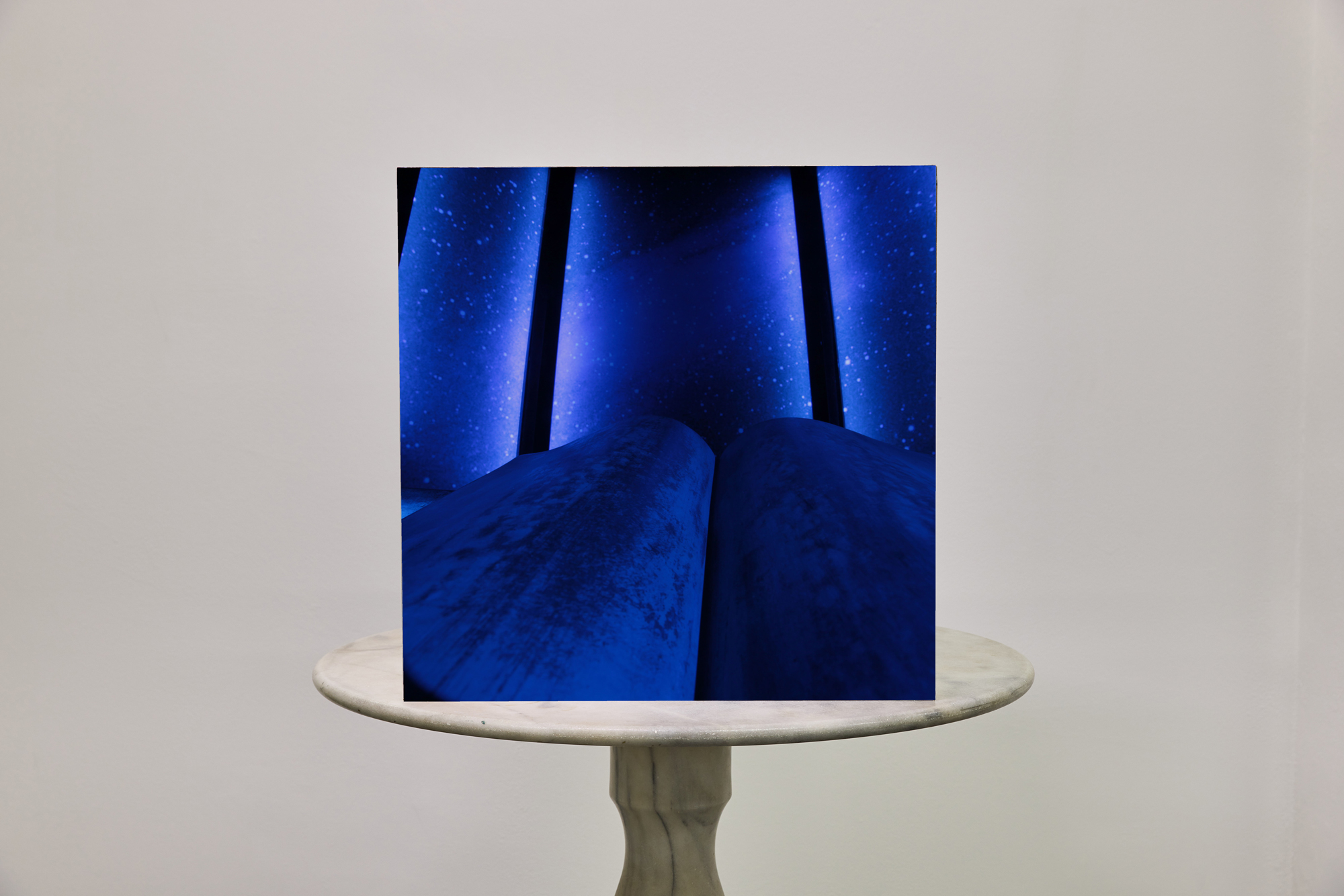
We will process the personal data you have supplied in accordance with our privacy policy.

